Lots of things happen by accident. Children, the discovery of penicillin, putting a kiss at the end of an email to your boss. We’ve all been there.
But nobody buys a Toyota Fortuner by accident. Yep, they may well buy other large seven-seater SUVs, like the Kia Sorento, or Toyota Kluger, without thinking it too much about it, but not the Fortuner.
That’s because the Fortuner isn’t particularly good looking, nor is it wonderfully comfortable to drive. So it’s nothing like a Sorento or Kluger, apart from having the same number of seats.
See, the Fortuner is good at other things, such as being highly capable off-road, because it shares its underpinnings with the Toyota HiLux 4x4. Really, Toyota should have called it the HiLux 7 or the HiLux SUV.
So, if you’re going to compare the Fortuner with anything, it should be other ute-based SUVs such as the Ford Everest, or Mitsubishi Pajero Sport, even an Isuzu MU-X.
We’ll cover the Fortuner’s strong, and not so strong points in this review of the new and updated range including what safety equipment comes standard, the fuel economy, practicality, price and features, plus what it’s like to live with in the city and drive off the road.
Toyota Fortuner 2020: GXL Premium Interior B+R Trim
| Engine Type | Diesel Turbo 4, 2.8L |
|---|---|
| Fuel Type | Diesel |
| Fuel Efficiency | 8.6L/100km (combined) |
| Seating | 7 |
| Price From | $43,670 - $50,820 |
| Safety Rating |
|
Does it represent good value for the price? What features does it come with?
8 / 10
There are three grades in the Fortuner range – the entry-level GX with a list price of $49,080, the GXL which is $54,350, and the Crusade for $61,410.
The GX comes standard with 17-inch alloy wheels, LED headlights, cloth seats, air conditioning, an 8.0-inch display with a reversing camera, Apple CarPlay and Android Auto, a six-speaker stereo, plus front and rear parking sensors.
The GXL has the GX’s features including the 17-inch alloys, but adds 'Downhill Assist Control', climate control, sat nav, digital radio, privacy glass, power driver’s seat, roof rails, LED fog lights and a proximity key.

The Crusade has all the GXL’s gear but adds 18-inch alloy wheel, Bi-LED headlights, door puddle lamps, leather seats (heated up front), an 11-speaker JBL sound system and a power tailgate.
The pick for value here is the GXL and as with our test car you can option the premium interior pack which adds leather upholstery and power front adjustable seats.
Compared to its rivals, the Fortuner is more affordable than the equivalent Ford Everest, but more expensive than a comparable Mitsubishi Pajero Sport.
Is there anything interesting about its design?
7 / 10
The Fortuner isn’t beautiful, but it is rugged and ready looking. Those tough looks aren’t just for show either, see the Fortuner shares the same underpinnings as Toyota’s HiLux 4x4 ute.
So, the tall ride height and high front end starts to make sense knowing that this is a SUV based on an off-road ute, right down to the ladder frame chassis and the many other components it shares with the HiLux.
The Fortuner is about 530mm shorter end-to-end than a HiLux at 4795mm long, but the same width at 1855mm across and about 10mm shorter in height – although the roof racks see it stand 1835mm tall.
Matching the Fortuner’s rugged exterior is a cabin with a fairly basic design and robust feel. So, while it’s plush in places such as the leather seats that came as part of the premium interior pack on our (GXL grade) test car, there are also the chunky runner floor mats that don’t mind a bath with a garden hose (take them out first, okay?).

Side steps are standard on all grades, but the GXL adds roof racks, privacy glass and chrome door handles.
The Crusade adds more in the way of glamorous touches such as a premium grille finish, a grey coloured front ‘bash plate’, wood grain-look instrument panel and leather upholstery.
What are the key stats for the engine and transmission?
8 / 10
All grades in the Fortuner range come with the same engine – it’s a 2.8-litre, four-cylinder, turbo-diesel which now makes 20kW more power and 50Nm more torque than before with its outputs of 150kW/500Nm.
Shifting gears is a six-speed automatic transmission.

All Fortuners are four-wheel drive. You can select from two-wheel drive, and four-wheel drive in high and low ranges.
The braked towing capacity is 3100kg.
How practical is the space inside?
8 / 10
There are some super practical parts to the Fortuner’s cabin, but also a couple of 'why-did-they-do-that?' areas, too.
First, the good points. The side steps are sturdy and meant my six-year-old could climb in and out despite the tall ride height. Also helping him were hand grips moulded into the plastic trim around the B-pillar at 'kid height' for children to hold onto.
Then there are the rubber floor mats, which after a week were covered in mud, sand and potato chips, but I could pull the entire rear mat out and hose off the evidence.

Cabin space is also good and while the third row is too cramped for me at 191cm (6'3") tall, I can sit behind my driving position with plenty of legroom in the second row.
The doors have bottle holders, there are cupholders, trays and hidey holes in all three rows, there’s a cooled glove box and a centre console bin large enough to store a small backpack.
All Fortuners have seven seats and this is where we come to the 'why-did-they-do-that?' moment. That third row doesn’t fold flat, instead the seats fold up towards the side windows and are fastened into position there.
Not only does this eat into your cargo space, but, if not fastened properly the heavy seats can fall back down and as a parent I was concerned about small hands or fingers being in the way.
The cargo capacity with third row folded that way is 716 litres, but with them in place you have 200 litres of boot space behind them.
USB ports are thin on the ground in all grades with just one up front, although there are three 12V outlets on board and the Crusade also gets a 220V power point.
All three rows have directional air vents, with fan speed adjustment in the very back seats.
What's it like to drive?
7 / 10
Right at the start of this review I said the Fortuner isn't wonderfully comfortable to drive and while that’s true my family and I quickly became used to it.
The Fortuner in the GXL grade came to live with us for a week and we used it daily for school drops off, supermarket runs, and a weekend trip to the beach. So, I can give you a pretty good idea what it’s like to live with in the city and suburbs.
If you want to know how it performs off-road take a look at our Adventure Editor Marcus Craft’s review. Crafty drove the GX grade of the Fortuner at about the same time I had mine and between the two of us we’ve covered what it’s like to live it the Fortuner in the city and ‘burbs, plus how it handles itself in the rough stuff.
Also, be sure to check out the video above where we team up to show you what it can do in and out of the city.
What I can tell you is that the Fortuner’s ride is firm. Stiff suspension and its ladder frame chassis meant jiggly journeys, while handling is nowhere near car-like.
If you’ve driven a HiLux, you’ll know what it’s like to drive the Fortuner. Both share the same platform, and have similar driving characteristics, right down to the upright seating position and steering wheel with limited reach adjustment.
Like the HiLux, the Fortuner was refreshed this year and received some excellent updates which improved the way it drives. Best of all is the steering upgrade.

A new variable-flow power steering pump now means low-speed steering is fantastic. I noticed this especially in car parks where I could pilot the Fortuner more easily than before.
The 2.8-litre four-cylinder turbo-diesel was upgraded as well with more torque and power, and this too makes the Fortuner a better SUV than the previous model which seemed to lack oomph.
There’s good forward visibility, although, when the third row is stowed away those rear side windows are blocked and that made parallel parking a bit of a guessing game at times.
There is a reversing camera, but the picture quality isn’t great, and the front and rear parking sensors got a workout when I was driving.
The trade off for the Fortuner being a bit uncomfortable, with its ladder frame and stiff suspension, is an SUV that is a proper off-road vehicle. We’re talking a wading depth of 700mm, an approach angle of 29 degrees and a departure angle of 25 degrees (ramp over is 23.5 degrees), while ground clearance is 216mm. There’s also a rear differential lock.
As I said, you can read and see what Crafty had to say about its off-road performance in his review, but he found the Fortuner to be talented over challenging terrain and while he also found the ride to be firm, the new steering and extra grunt made this SUV even better in the rough stuff.
You might be interested to know the GX and GXL grades come standard with all-terrain tyres, while the Crusade gets 'highway tyres.'
How much fuel does it consume?
7 / 10
Toyota’s official fuel economy claim for the Fortuner is 7.6L/100km and that’s after a combination of open and urban roads. My own testing delivered an average mileage of 10.1L/100km. The fuel tank holds 80 litres.
Warranty & Safety Rating
What safety equipment is fitted? What safety rating?
8 / 10
The Toyota Fortuner scored the maximum five-star ANCAP rating when it was tested in 2019. All three grades have AEB with pedestrian and cyclist detection, lane departure alert with steering assistance, adaptive cruise control and road sign recognition.
There are seven airbags, and it’s good to see the third row is covered by curtain airbags, too.
Only rear parking seniors were standard across the range previously and now all Fortuners have front parking sensors, as well.
For child seats there are two ISOFIX points and three top tether anchor mounts across the second row.
Under the car is full-sized spare wheel.
What does it cost to own? What warranty is offered?
7 / 10
The Fortuner is covered by a five-year/unlimited kilometre warranty and a five-year capped price servicing plan.

Servicing is recommended every six months or 10,000km and you can expect to pay $250 for each of the first four services.
Verdict
The Toyota Fortuner really should have been called the HiLux 7 or the HiLux SUV, because it is a seven-seat SUV based on the HiLux off-road ute. Sure, its not the most comfortable SUV out there, but this vehicle can go places the Sorentos and Klugers of this world can only dream about.
Like the Ford Everest, Mitsubishi Pajero Sport and other ute-based SUVs, the Fortuner is ideal for the family which lives remotely and off-road driving is part of daily life. Or for those who may live in the suburbs and head away on regular adventures towing a caravan or trailer behind.
That’s why nobody buys an SUV like the Fortuner accidentally, the ride and looks will put a Kia Sorento buyer off, but for the right people it’s exactly what they need – a ute with seven seats and a boot.
Picking the sweet spot of the Fortuner range is easy... it's the GXL. Stepping up to the Crusade buys you items you don't need such as a power tailgate. The GXL comes with roof rails, privacy glass, a proximity key and if you want leather seats you can option the premium interior pack which my test car featured.
Pricing Guides




















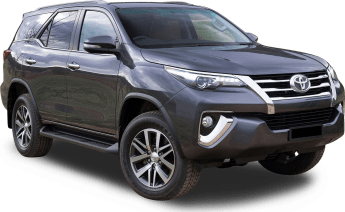

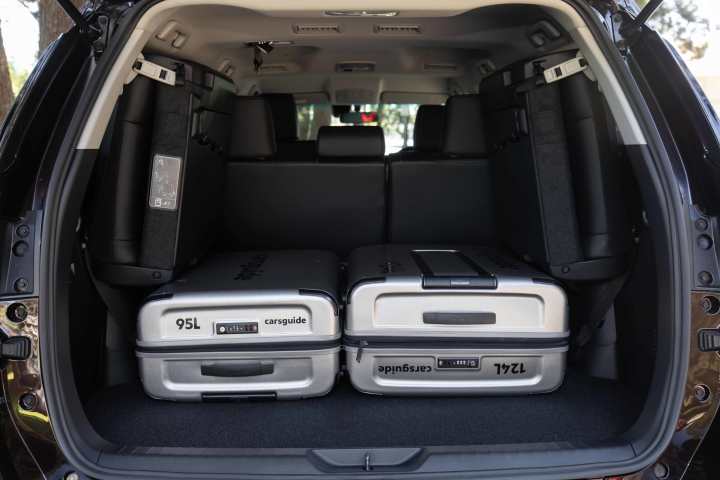

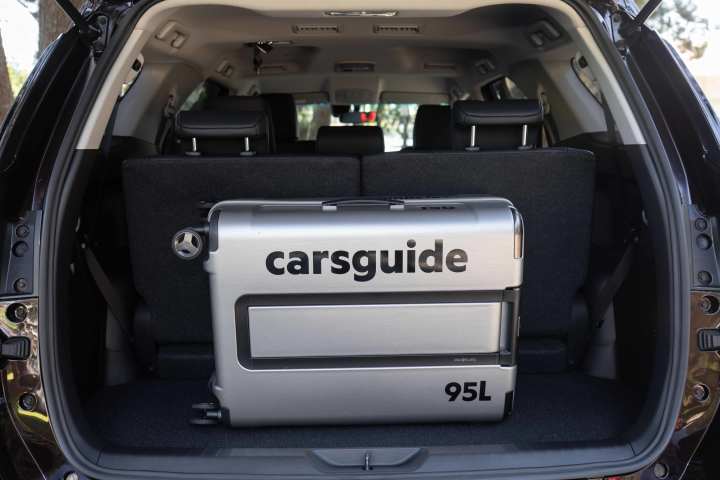
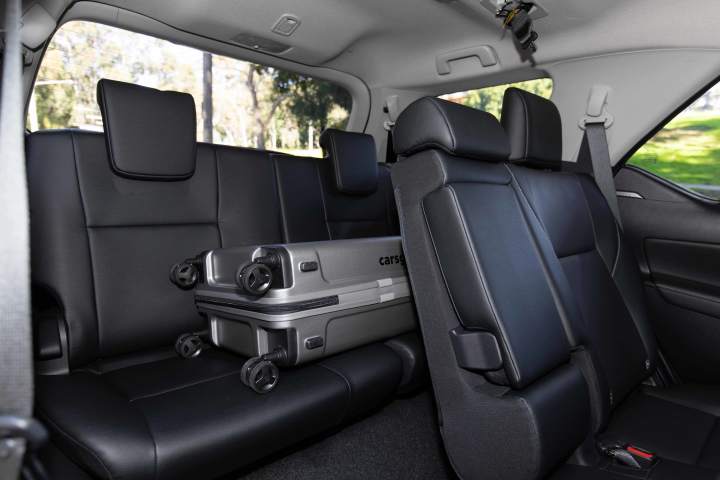





.jpg)



















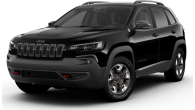

















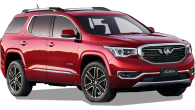
.png)

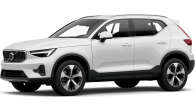






.png)




.jpg)


.jpg)
.JPG)
.jpg)
.jpg)


.jpg)
.jpg)
Comments